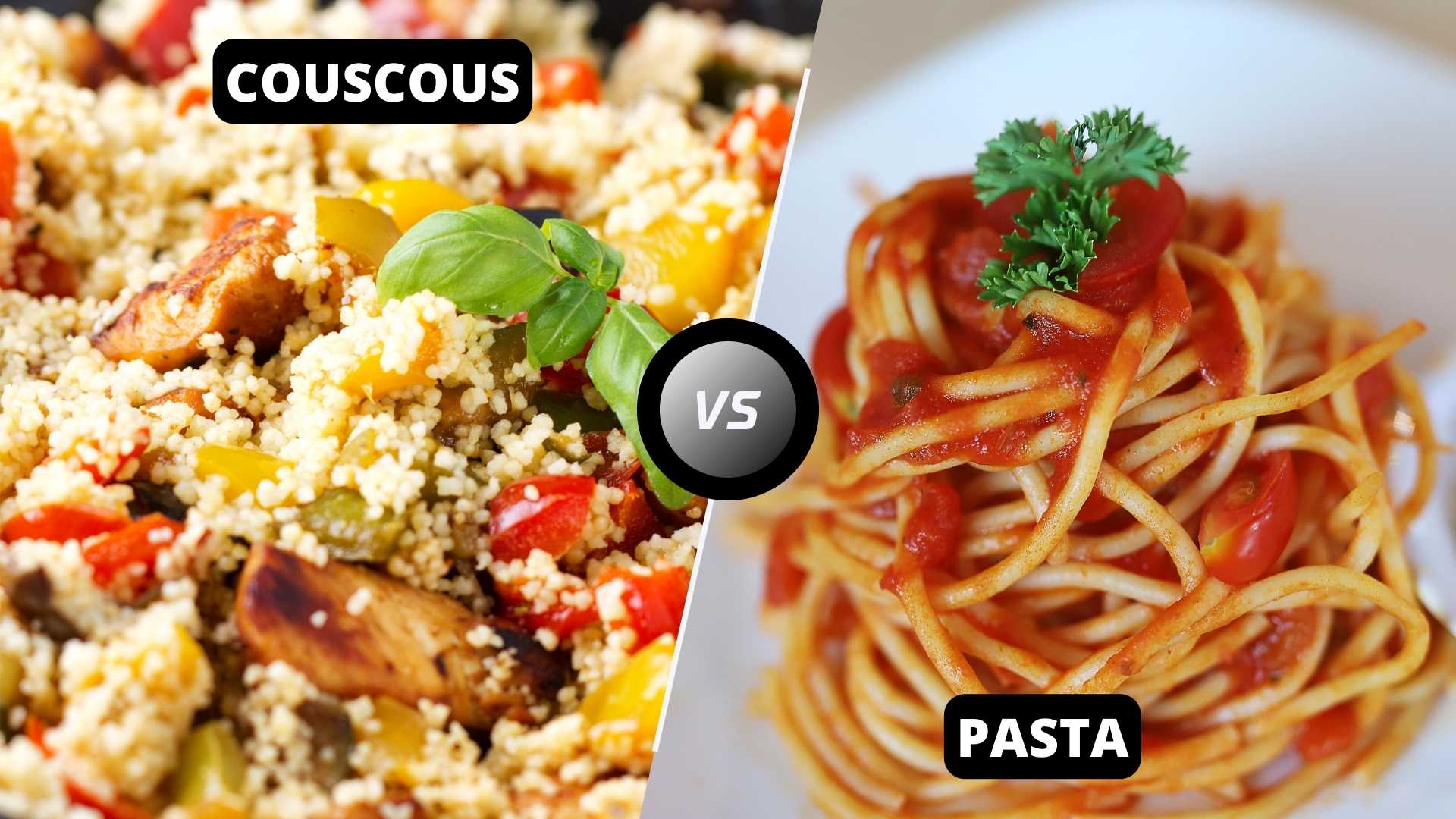Couscous and pasta are two of the most popular staple foods in the world. While couscous is a traditional North African dish, pasta has its roots in Italian cuisine. These two foods are versatile, tasty, and easy to prepare.
In this article, we will explore the differences between couscous and pasta, including their nutritional value, health benefits, culinary uses and versatility, cooking methods and preparation, taste and texture, and ultimately, which one is better for you.
Nutritional Comparison
When it comes to nutrition, couscous, and pasta have different nutritional profiles. Couscous is made from semolina flour, whereas pasta is made from durum wheat semolina.
Calories and Macronutrients
In terms of calories and macronutrients, couscous and pasta are quite similar. One cup of cooked couscous contains around 170 calories, 2 grams of fat, 6 grams of protein, and 36 grams of carbohydrates. One cup of cooked pasta contains approximately 200 calories, 1 gram of fat, 7 grams of protein, and 42 grams of carbohydrates.
Micronutrients and Minerals
Couscous is rich in vitamins B1, B3, and B9, and minerals such as iron, phosphorus, and selenium. Pasta is a good source of iron, manganese, and selenium, as well as vitamins B1, B2, and B3.
Glycemic Index and Effect on Blood Sugar Levels
Couscous has a low glycemic index, meaning that it causes a slow and steady rise in blood sugar levels, making it an ideal food for people with diabetes. Pasta has a higher glycemic index, meaning it causes a more rapid rise in blood sugar levels.
Health Benefits
Both couscous and pasta have health benefits, but they differ in terms of the specific nutrients they provide.
Couscous Health Benefits
Couscous is a good source of fiber, with one cup of cooked couscous containing around 2.2 grams of fiber. Fiber is essential for digestive health and can help reduce the risk of developing heart disease, stroke, and certain types of cancer.
Couscous is also rich in plant-based protein, making it an ideal food for vegetarians and vegans. One cup of cooked couscous contains around 6 grams of protein.
Finally, couscous has a low glycemic index, meaning it can help regulate blood sugar levels, making it an ideal food for people with diabetes.
Pasta Health Benefits
Pasta is a good source of energy, with one cup of cooked pasta providing around 200 calories. It is also rich in iron, which is essential for the production of red blood cells and oxygen transport in the body.
Additionally, pasta may help reduce the risk of heart disease. A study published in the Journal of Nutrition found that people who ate pasta as part of a low-glycemic-index diet had a lower risk of developing heart disease compared to those who ate a high-glycemic-index diet.
Culinary Uses and Versatility
Both couscous and pasta are versatile foods that can be used in a variety of culinary applications.
Couscous Culinary Uses
Couscous is a staple food in North African cuisine and is often used in dishes such as tagines and couscous salads. It can also be used in Western-style dishes, such as roasted vegetable couscous, or as a side dish for grilled chicken or fish.
Pasta Culinary Uses
Pasta is a staple in Italian cuisine and is often used in dishes such as spaghetti Bolognese, lasagna, and carbonara. It is also used in international dishes, such as Asian-style noodles, Greek pastitsio, and American macaroni and cheese.
Pasta can be used in a wide variety of dishes, from simple spaghetti with tomato sauce to more complex dishes such as seafood linguine or vegetable lasagna.
Cooking Methods and Preparation
Both couscous and pasta can be prepared using different cooking methods.
Couscous Cooking Methods
Couscous is traditionally steamed in a special pot called a couscoussier. However, it can also be boiled in water or broth. To prepare couscous, you need to add boiling water or broth to the couscous and let it sit for a few minutes until it absorbs the liquid.
Pasta Cooking Methods
Pasta is typically boiled in a pot of salted water. The cooking time depends on the type of pasta and whether it is fresh or dried. To ensure that pasta is cooked al dente, it is important to cook it for the right amount of time and not overcook it.
Pasta can also be baked in the oven as part of a casserole or baked dish, such as lasagna or baked ziti.
Taste and Texture Comparison
Couscous and pasta have different textures and flavors.
Couscous Taste and Texture
Couscous has a light and fluffy texture and a mild flavor. It is often used as a base for dishes, and its mild flavor allows it to absorb the flavors of the other ingredients.
Pasta Taste and Texture
Pasta comes in a wide variety of textures, from thin spaghetti to thick fettuccine. Its texture can range from delicate and tender to firm and chewy, depending on the cooking time. Pasta also has a more pronounced flavor than couscous, making it a more prominent ingredient in dishes.
Conclusion
In conclusion, couscous and pasta are both versatile, tasty, and easy-to-prepare foods. While they have similar calorie and macronutrient profiles, they differ in terms of their micronutrient content, glycemic index, and specific health benefits.
Couscous is a good source of fiber and plant-based protein, and has a low glycemic index, making it an ideal food for people with diabetes. Pasta is a good source of energy, iron, and other minerals, and may help reduce the risk of heart disease.
Both couscous and pasta can be used in a variety of culinary applications and can be prepared using different cooking methods.
Ultimately, which one is better for you depends on your individual nutritional needs and preferences. Both couscous and pasta can be part of a healthy and balanced diet and can be enjoyed in moderation as part of a varied and flavorful meal plan.
